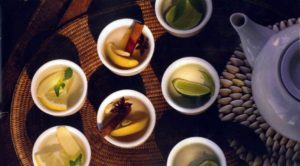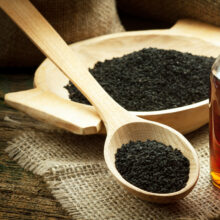Anti-Inflammatory Diets Made Simple: Smart Tips from Nutrition Experts
- Published: Monday, January 23rd 2017
- in Nutrition

Medical evidence indicates that chronic inflammation (inflammatory) has been linked to many diseases, such as certain cancers, heart disease, bone loss, arthritis, and more. Eating an anti-inflammatory diet can seem complicated but it is simple if you substitute the word irritation for inflammation: in other words, avoid foods that are irritating–like too much alcohol, dairy and processed foods –just like you try to avoid people who are irritating!
Dr. Andrew Weil, who has been credited with popularizing anti-inflammatory diets –and won a Spafinder Visionary Award for his tireless work in integrative medicine– explains that while inflammation brings “…. nourishment and more immune activity to a site of injury or infection (when it) persists or serves no purpose, it damages the body and causes illness.” He notes that stress and exposure to toxins like secondhand tobacco smoke can contribute to such chronic inflammation, but dietary choices play a big role as well. His recommendations? Aim for variety, keep it simple, eat as much fresh and organic food as possible, eat more fruits and vegetables and keep protein to 10 to 20 percent of your diet.
Kimberly Gomer, MS, RD, LDN, and director of nutrition at renowned wellness and weight loss destination Pritikin Longevity Center and Spa agrees that eating well doesn’t have to be super complicated, noting that, “Sometimes it’s as simple as a little less of this and a little more of that.” Here are three of Kimberly’s favorite anti-inflammatory foods that are delicious and packed with nutrients.
Leafy Greens of Spinach, Kale, and Swiss chard
Put that wedge of iceberg lettuce down and pick up the dark leafy greens of spinach, kale, and Swiss chard. “Enjoy all the anti-inflammatory goodness, vitamins, and minerals,” encourages Kimberly. Whereas iceberg is high in water content, dark leafy greens are rich in vitamins like A, C, K as well as fiber, folate, iron, and calcium.
Lentils and Beans
Don’t rely on animals to get your protein. “Explore plant protein,” urges Kimberly. “[Beans and lentils are] quality protein packed with fiber but with none of the saturated fats and cholesterol [found in red meat].”
Tropical Fruits 
Tropical fruits are available most of the year, but Kimberly suggests enjoying the fruits of the season, like mango and papaya, and get all of the delicious vitamins and mineral that come along with them. These fruits specifically are high in carotenoids and antioxidants.
To get an inside look at which foods are serious disease-fighting power players, Spafinder spoke with Homer Lim, MD geriatrician, integrative medicine and the The Farm at San Benito’s medical doctor from 2010 to 2015, who shared his the top five anti-inflammatory foods. (We’ve also included some of our favorite recipes from the Spafinder archives.)
Broccoli and the Cruciferous Family
 “The green flowers of broccoli contain indole-3-carbinol, [which] can prevent and kill breast cancer cells. Aside from broccoli, Brussels sprouts and cabbage also contain sulforaphanes that are also excellent in keeping cancer cells at bay,” explains Dr. Lim. Spafinder® Wellness Recipe using broccoli: Super Food Recipe: Phyto-Full Forbidden Rice Salad
“The green flowers of broccoli contain indole-3-carbinol, [which] can prevent and kill breast cancer cells. Aside from broccoli, Brussels sprouts and cabbage also contain sulforaphanes that are also excellent in keeping cancer cells at bay,” explains Dr. Lim. Spafinder® Wellness Recipe using broccoli: Super Food Recipe: Phyto-Full Forbidden Rice Salad
“Mangosteen is widely known as the fruit that has a tough peel,” says Dr. Lim. “However, its anti-cancer properties lie in the peri-carp, or the peel itself. Xanthones, the most widely researched antioxidant, has been shown to prevent cancer [and] reduce inflammation, as well as reverse age-related macular degeneration.”
According to Dr. Lim, this abundant fruit is underutilized in the fight against cancer. “[Papaya] enzymes papain and chymopapain can reduce inflammation, as well as reduce cancer cell growth.” Spafinder Wellness Recipe using papaya: Hydrating Spa Recipe: Eat Your Water with a Tropical Fruit Salad!
Dr. Lim calls kale the “underdog” of cruciferous greens and believes it deserves its own mention on the list. “[Kale] ranks [as] one of the highest in terms of its anti-cancer properties. Glucosinolates, aside from the sulforaphanes and carbinols, in this green leafy vegetable purify bloods [and] detoxify, as well as kill tumor cells.” Spafinder Wellness Recipe using kale: Autumn Kale Salad Recipe
Turmeric
 Turmeric is “truly the KING of all the anti-cancer herbs and vegetables,” Dr. Lim continues. “Turmeric and its extract, curcumin, have been shown to have anti-inflammatory effects.” However, anti-inflammatory benefits aside, what stands out about turmeric are its anti-cancer properties. “Curcumin acts on the cellular, chromosomal, cell division phase, DNA, as well as the genetic levels. This is perhaps the most perfect chemotherapy drug. The only hindrance is its absorption is less than 10 percent when taken orally. The best way to take turmeric is with oil,” explains Dr. Lim. Spafinder Wellness Recipe using turmeric: Detox Nation: Teas to Cleanse, Relieve, and Balance
Turmeric is “truly the KING of all the anti-cancer herbs and vegetables,” Dr. Lim continues. “Turmeric and its extract, curcumin, have been shown to have anti-inflammatory effects.” However, anti-inflammatory benefits aside, what stands out about turmeric are its anti-cancer properties. “Curcumin acts on the cellular, chromosomal, cell division phase, DNA, as well as the genetic levels. This is perhaps the most perfect chemotherapy drug. The only hindrance is its absorption is less than 10 percent when taken orally. The best way to take turmeric is with oil,” explains Dr. Lim. Spafinder Wellness Recipe using turmeric: Detox Nation: Teas to Cleanse, Relieve, and Balance
As these nutrition experts point out, you don’t have to give up all the foods you love to benefit from a diet that is less irritating. Aim for variety, keep your food fresh and simple, and think about adding super-foods like turmeric and kale to your diet and you’ll be on your way to a healthier you.



